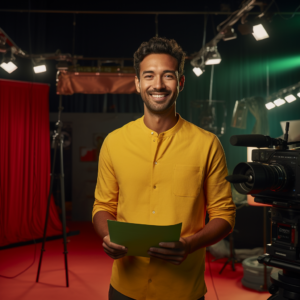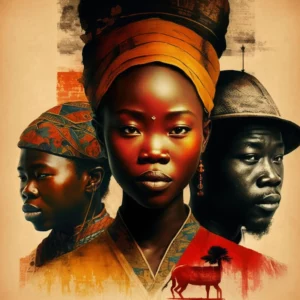Listen to this article
POST PRODUCTION IS THE FINAL CREATIVE PHASE IN THE VIDEO PRODUCTION PROCESS.

All of the video content has been filmed, now it’s time to turn all that awesome footage recorded into a full-fledge story for everyone to enjoy. There are three phases in video production.
- Pre-Production – In this stage, Directors and producers and various creatives look at the script final draft and begin to break down EXACTLY what needs to happen. Scout and book locations, hire actors, hire crew, rent equipment, etc. Every part of a production is planned in Pre-Production. For additional information on Pre-production, What happens during Pre-Production, and How Video Production Companies Work, follow these links.
- Physical Production/Principal Photography – is what people think about when they think of movie sets or TV sets. Actors, Directors, and crew are all on location or in a studio, capturing an actors performance on camera. To learn more about What happens during Physical Production, follow the link.
- Post-Production – Post Production is where the magic happens. Sure you can do SFX and things like this onset, but each story’s editor(s) and VFX department makes every video asset shine exponentially better. To learn what Happens during Post Production, read this article.
Most people do not think of Editors, modelers and foley artists as the main creative components of a Video Production. They are. And a matter of fact, I’d argue everyone who makes up the production process has an equally important role in the production process. Imagine a car dropping into a lake, and we do not hear a SPLASH! Imagine a boat navigating a storm and we do not hear the sound of the waves crashing against the boat and the sound of the engines struggling through the added forces of the waves. The wind moving from speaker to speaker, surrounding you as if you are on the boat. Imagine Iron Man opening up a shoulder blade and firing missiles, and those missiles not looking or sounding real.
These experiences are elements of production no actor, or director can create for the audience. These, my friends, are created during Post-Production. For additional insight into what happens at Post Production Studios, check out this article. Have a look below at many of the usual suspects that work in Post Production houses, their roles, and how everything fits together like a post-production puzzle!
Editing

This is the bulk of what happens in Post Production. Editors are given piles of hard drives containing gigabytes of video footage and data. Video Editors take these hard drives and start to systematically edit scenes together. Scenes and takes are laid across an Editing software’s timeline and the editors slowly begin to piece together what we watch on television, film and the internet.
Editors come in all sorts of shapes and colors. . .not green, red, blue, etc. But by this, I mean that there are various levels of talent and skill with regard to Editors. The most important thing in editing is to have a passion for both editing and the story. Passion is typically the commonality with everything great. Editors sit in a chair for 8-16 hours at a time working on scripted content, without a passion for editing, this job would not be executed properly.
VFX

Once editors finish scenes or which need Visual Effects, VFX artists take the footage and begin to create effects to make a scene more dynamic. A missle blowing up a bridge, New York City freezing over, MARS. These scenes would be extremely expensive or impossible to create. If I had to guess, going to film Martian – on Mars – would cost $2B. Now that I think about it, it’s not completely impossible, Disney spends that kind of money on their MARVEL tentpoles. HA!
Congratulations to Disney and all the AMAZING work they have produced recently. My point is VFX makes the unaffordable and the unimaginable real. Without it, Vin Diesel could not drive a Lycan out of a Penthouse in Dubai, 8ft tall Avatar creatures could only be played by Shaquille O’Neil, and Michael Douglas would never be able to see his 30-year-old self on screen again. Did the last one go too far? I don’t think so, we are all getting older, right?
Color Correction/Color Grade
After the story has been edited and after VFX has completed their task, video clips or the project in its entirety is send for a color treatment. Color artists take these video clips/footage and begin to give the scenes life. Most cinema cameras shoot flat images. Colorists take these flat images, with or without VFX assets and begin to give them color. It is important to note that VFX are never color-treated before being sent to the colorists.
SFX + Sound Design

Sound producer sitting by mixing equipment in studio
I’d like to take a specific VFX scene that I mentioned above to help give you perspective as to how important this part of the post-production process is. Vin Diesel revs a 780 hp Lykan engine on a crowded penthouse dance floor. He releases the clutch and the Lykan does a 360 on the marble floor. He steadies the car, and it speeds off at 90 miles an hour 100 stories in the sky.
What does that sound like? Sound mixers capture a lot of the sound on set. But what else would you imagine hearing? Glass shattering, tires tearing up the marble floor? People screaming? While on set, you can only record up to so much accurate material. Sure they recorded the engine revving, but potentially not loud enough. Sure they recorded some tires screeching sounds, but not enough. At the end when Vin Diesel drives the Lykan out of the building, those glass-shattering sounds were created in post-production.
Imagine how dangerous it would be to drive a vehicle 90 miles an hr in a controlled film environment. Even when they clear the room. I speak about this because I was actually there for the filming of that scene and it was marvelous to watch. Take after take. Moving people in and out of the room to capture different audio and visual details. At the end of the day, what can not be captured in the room, it captured in post-production. Either pulled from digital libraries, or 100% original creations, which leads us to the next group of creatives.
Foley
Foley artists bring us closer to the action. When Vin Diesel drove the Lykan through the glass window, he obviously didn’t do that in real life. So how do we hear glass shattering when the Lykan breaks through the glass? The answer is Foley artists. Foley artists sit in a studio with various gadgets and widgets and create sounds. Chances are when someone is sipping on soup on screen, the sipping sound played out on screen was recorded in a studio and the foley artist was sipping soup. When we see a horse galloping across the countryside, do you have any idea how hard it would be to record the sound their hooves make? Damn near impossible.
First, you would need to be on a flying carpet of some sort so your vehicle or second horse does not distort the sound you are trying to capture. Chances are, you could not pay a sound mixer or boom operator to ride a horse and capture sound at the same time anyway, ha. Instead, a foley artist is in a studio, with cups and carpets creating what we think are horses galloping across a plain.
Music Score
Sound Design and score are quite different. Scoring a scene gives us a frame of mind. If you had to think about sound production in the form of a cake. Audio is the whole cake. It tells the story, it’s the meat and potatoes, the bulk. Sound Design is the icing, it’s sprinkled over the top to give the cake flavor. The Music Score is the flavor itself. It’s the flavor of the cake. Chocolate, red velvet…it sets the tone
Audio Post + ADR
One of the final steps in the production assembly line is Audio Post and ADR. Audio Post Supervisor’s job is to listen to the audio captured on set and make sure all of the talent’s lines are clear and easy to understand. If they are not, talent is called back in for ADR sessions. ADR stands for Automated Dialogue Replacement. Not Audio Dubbing something or another. These sessions place an actor in a recording booth very similar to what you might see a musician record songs in. The only difference is that the actor has a screen in front of him or her and he or she watches scenes of him or herself and delivers their lines enunciating their words.
I hope this article helped you understand what happens in the post-production process a bit better. If you or someone else you know wants to learn more about the post-production process, check out these articles below.
Top Notch Tactics on becoming more effective with Post Production Videos
Small details you need to know about Post Production in Filmmaking
What goes on in Post Production Studios
Visual Effects – A New Benchmark in Video Production
Share them with friends using the buttons at the bottom of the article – and as always. I look forward to seeing you on set!








